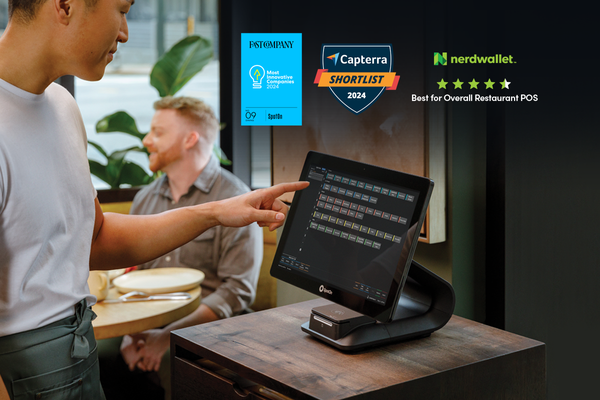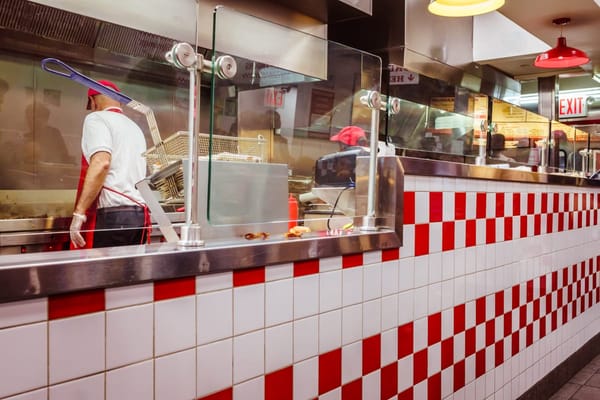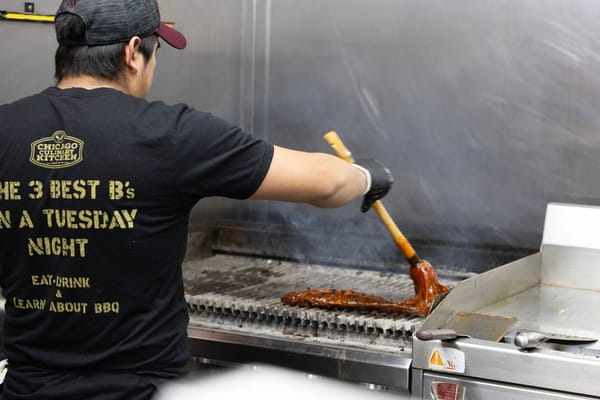Efficient technology can help you juggle the demands of your busy restaurant business.
But is the technology you're using doing enough?
You need technology that will help you tackle time-consuming tasks, such as online marketing and reputation management, inventory management, and employee scheduling. And it needs to give you better visibility into and control of your operations to boost profits.
Your restaurant management system includes your point-of-sale (POS) system, and it should be able to manage third-party orders, enable online ordering and reservations, streamline inventory and scheduling, provide insightful reports in real time, and drive marketing automation and loyalty programs. It should also be easy to use, have accessible support, and integrate with third-party business systems, such as your accounting and security systems.
The right solution will reward you with more revenue and more time away from the computer so you can focus on what matters: improving the guest experience and growing your business.
Meeting guests' tech-pectations.
Are you providing guests with the services they're looking for online and in-house, such as self-service and touchless options? Customer-facing technology has quickly become the norm, and restaurant guests like it. According to data from Technomic Ignite, 46% of consumers want to order food online, through a mobile app, or using a tabletop kiosk, and 43% want to pay that way.
With an end-to-end POS solution and services, you can build a branded website for your restaurant and provide online ordering and POS integration to transfer orders directly from your website into your POS and kitchen. You can also provide your guests with a way to book a table online, giving them the power to make, update, and cancel reservations.
Mobile contact-free dine-in ordering and payment options also help keep guests safe and help tables turn faster. Guests can scan a QR code at the table to order and pay right from their phones—without ever touching a menu or credit card. Your POS saves guest profile data, letting you see which customers are coming back into your dining room and which ones are loyalty program members.
This is also a good time to assess your menus, figure out which items are performing better off-premises and in-house, and make changes or offer specials based on what guests are ordering where. For example, if huge online orders are sapping your stock of Buffalo wings, you can adjust prices and offer a deal on chicken fingers or jalapeno poppers to redirect guests' interest.
The technology you use should empower you to update your menus on the fly so you can help your staff and engage customers when changes happen.
Boosting efficiency for the front and back of the house.
An automated table management and tracking system can improve order timing and seating—without the host needing to shuffle papers and check waitlists. An automated system can send guests a text message when their table is ready. Orders come in across platforms and update in real time in your POS and kitchen display system, making it easy to monitor your kitchen workload and inventory and kick things into high gear when necessary. And the data an automated system collects can help you find gaps in performance and reservations, and show you where to target future marketing or efficiency efforts to fill the seats.
One of the main pain points for guests is waiting for their server to bring the check. Putting the power of tableside ordering and payment in your staff's hands via a handheld POS eliminates trips to and from a POS station and lets guests pay with a credit card or mobile device right at the table. Look for one that lets guests split checks, accepts multiple payment types, and has a built-in printer.
Integrating your POS.
Is your POS system integrated with all your business software and applications? Having an integrated POS that operates as a single source of truth for your restaurant management will drive efficiency, reduce errors, and save time and money. Having all your data in one place means you only have to open one program to stay on top of your inventory, avoid costly scheduling mistakes, compare sales to employee productivity, send updates to your accounting system, and more.
Gathering insights anytime, anywhere.
Does your POS system include robust reporting and powerful mobile features that help you stay on top of restaurant performance while you're away? Your POS should include a variety of interactive reports to keep you in the know. For example, your sales report should provide you with individual items sold, payment types, individual server sales, and more. This information can help you plan better shift scheduling, inventory purchasing, and menu updates. Even better, you should be able to access this information remotely and receive alerts wherever and whenever necessary.
Managing your digital brand and automating marketing efforts.
Can you communicate with guests and manage your restaurant's online marketing efforts and reputation across social media and review sites from your POS?
These days, word-of-mouth marketing happens online. You need more than a website and a Facebook page to manage your digital brand. Regardless of where your guests are talking about your restaurant, you need to be part of the conversation.
This is where time-saving customer engagement tools come in handy. These tools can help you manage your:
- Website. Keep guests up to date on your hours, menus, and specials, and facilitate online ordering and reservations with a branded page.
- Reviews. Monitor and respond to reviews on sites like TripAdvisor, Yelp, and more, from a single dashboard with review management software.
- Marketing. Integrate your social media channels and email to facilitate management and sharing of updates, specials and more to the right customers at the right time. Close the gap and engage with your guests beyond your doors with timely automated marketing.
- Loyalty programs. Encourage repeat visits and build your business with a loyalty program, and provide a VIP experience when regular customers make a reservation.
What's the return on your investment?
Now that you know what's out there, how well is your technology helping you? These systems collect critical data about your guests, traffic, sales, personnel performance, and more, and you can use that data to figure out what is and isn't working. Digging into intelligence from a robust, integrated POS can help you quickly pivot offers and attention where you need them most.
Your tech stack should be an investment that provides returns greater than its cost, and it should take tedious tasks off your plate. If it isn't doing either, it's time to reevaluate your technology, uncover pain points, define how you want to grow your business, and determine how technology can help.











